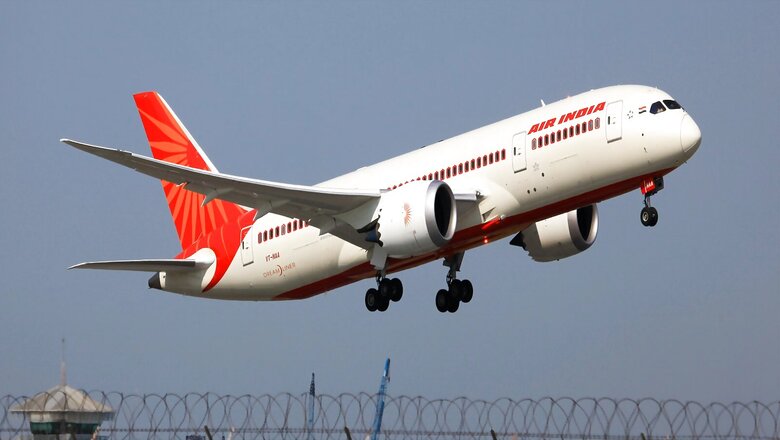
views
Air India, the prodigal son of Jehangir Ratanji Dadabhoy (JRD), has returned to the founder after a gap of 68 years. The Union government on Friday announced the winning bidder for Air India, successfully privatising a debt-laden national carrier. “Talace Pvt Ltd won the bid to own 100% of government stake in Air India,” Tuhin Kant Pandey, secretary, Department of Investment and Public Asset Management (DIPAM) said on October 8.
“Bidders have agreed to all terms and conditions. Five bidder were disqualified as they did not meet the criterion,” the Dipam Secy said. “The process was carried out in a transparent manner with due regard to confidentiality of bidders.
The Tata Group-Air India relationship went back to 1932 when legendary industrialist and India’s first commercially licensed pilot JRD Tata had launched the national carrier. The initial service offered a weekly airmail service between Karachi and Madras via Ahmedabad and Bombay. The airline soon expanded to passenger aircraft and in 1938 it started flying overseas. With Columbo being added to its list of destinations, the name of the airlines was changed to Tata Air Services and later to Tata Airlines.
The legendary airlines flew support missions for the British Royal Air Force during World War II in Burma. Once the war is finished, war, the airline changed its name to the now-iconic Air India. Then Union government soon took interest in Air India and bough 49 per cent stake in it. Soon after that, the government took over the company from Tata Sons and nationalised it with Air Corporations Act in 1953. As a part of restructuring the Indian government renamed the airline Air India International and its domestic services were transferred to Indian Airlines as a part of a restructuring.
Air India spread its wings and for the next 40 years, it was considered one of the crown jewels of the central government. Till 1990s, Air India continued to dominate domestic and international airline traffic. In 2000-01, the National Democratic Alliance tried to sell a minority stake in Air India in order to raise funds. Singapore Airlines along with the Tata group were interested in buying the that deal did not materialise.
Post 2000, Air India started losing its market share in the international sky as domestic private operators were tying up with other international airlines to offer connecting international flights at lower costs.
In 2005-06, Air India posted a small profit of Rs 16.29 crore while Indian Airlines reported Rs 49.50 crore profit. Both the airlines had combined debt of about Rs 5,000 crore. Private airlines introduced smaller aircraft that were more cost and fuel-efficient and faster. Air India gigantic fleet could not keep up the pace with them. In 2007, the Congress-led United Progressive Alliance government decided to merge the two airlines and ordered planes worth more than Rs 50,000 crore. The national carrier had to take heavy debt to purchase these planes and Air India never recovered from this loss. Mounting debt and loss in the domestic and international market, the financial burden of Air India became impossible to manage. There was a time when it could not pay salaries on time. The UPA government helped the airlines with Rs 30,000 crore in equity funding, spread over a decade. With the financial burden of over 100 aircraft and loans, the airline’s debt surged Rs 50,000 crore in 10 years.
In March 2018, the Union government issued an Expression of Interest (EOI) to sell 76 per cent stake of Air India, along with Air India Express, and a 50 per cent stake of Air India SATS Airport Services Pvt Ltd, a ground handling joint venture with Singapore Airport Terminal Services.The new owner of the airline had to take on a debt of Rs 33,392 crore. However, no private firms showed any interest in buying the debt-laden airline this time as well.
After two unsuccessful attempt, the government decided to sell 100 per cent share of the airline released the EOI to invite bidders in 2020. This time, the Union government invited bids for strategic disinvestment of 100 percent stake of the government of India in the airline in 2020. It also included along 100 percent stake in Air India Express Ltd and a 50 percent stake in Air India SATS. Four bidders expressed their interest, but only SpiceJet CEO Ajay Singh and Tata Sons finally remained at the forefront. The government time and again reiterated that the privatisation of the national carrier will be completed in FY22.
Read all the Latest News , Breaking News and IPL 2022 Live Updates here.




















Comments
0 comment